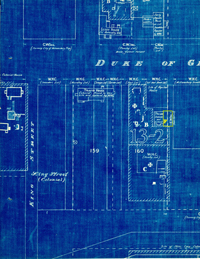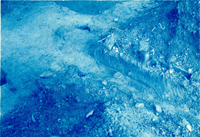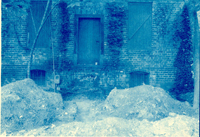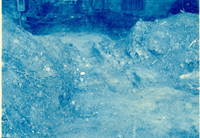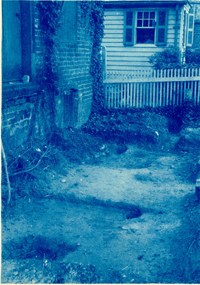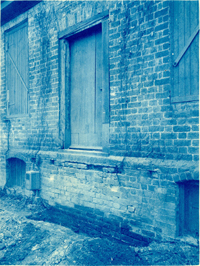Greenhow Brick Office Archaeological Report, Block 13 Lot 160Originally entitled:"Archaeological Report Block 13,
Area F (Debtor's Prison - Colonial Lot 160)"
Colonial Williamsburg Foundation Library Research Report Series - 1261
Colonial Williamsburg Foundation Library
Williamsburg, Virginia
1990
See drawings
Block 13 - Areas B & C.
To: H. R. Shurtleff, Director, Research & Record Department.
From: H. S. Ragland.
Subject: Archaeological Report - Foundations - Repiton House & Outbuildings,
Foundations - South of Debtor's Prison.
Date: April 2, 1932.
Submitted herewith is an archaeological drawing showing the above mentioned foundations, which were recently found by excavation.
Fragment of foundation, designated "A", is colonial and apparently the west wall of the Repiton House. The remainder of the foundation undoubtedly was destroyed by the construction of the first National Bank Building, which has a deep basement. (See drawing. Also, research report on Repiton House.)
Foundation "B" is colonial and evidently the foundation of the little building shown at that site on the Frenchman's Map. The bricks are like those in the Governor's Palace foundation.
Foundations, found at "D" and "E", on the hillside south of the Debtor's Prison, are old, but, as there is no record of the buildings that stood there and no definite bond was used in laying the bricks (which are several sizes, laid in oyster shell mortar), the period of construction has not been determined
See schedule of brick sizes, color, bond and mortar on the drawing.
Herbert S. Ragland.
HRR:vbl
ARCHAEOLOGICAL REPORT
BLOCK 13, AREA F
(Debtor's Prison - Colonial Lot 160)
Since this building, known by legend as the Debtor's Prison, is still standing, the archaeological investigation of the area was done mostly on the east, or Market Square side or front of the building. The main purpose of excavating in front of the building was to see if any indication of the entrance steps foundation could be found. No evidence of brickwork was discovered although the remains of two holes containing rotten cedar posts were uncovered approximately six feet from the face of the building. They were four feet apart - one hole being two feet to the north of the center line and the other two feet to the south of it. This is probably all that was left of a late or middle nineteenth-century wood stoop or small porch.
Two other square fills of black earth were found three feet from the building and approximately twelve feet apart. The purpose of these fills could not be determined. (See Archaeological Drawing and photographs W36, W37, W38, W39).
After excavating the area in front of the building, a careful, examination was made of the front wall under the door. This examination brought to light evidence of several wood nosing recesses later filled in with brick bats and lime mortar. This indicated that the original entrance steps entered from the north and south and were constructed of brick with wood nosing.
(See Architectural Report and photograph W94).
Colonial Williamsburg.
Architectural Department
November 25, 1947
